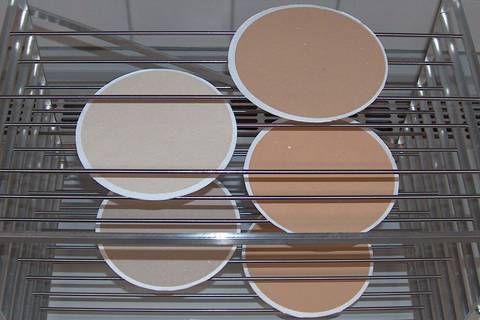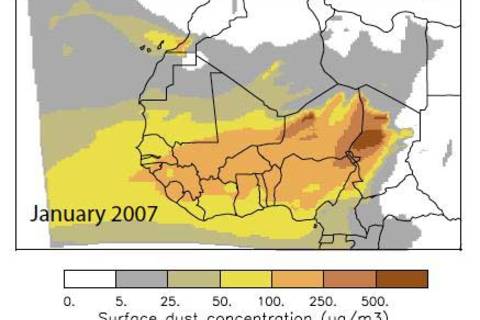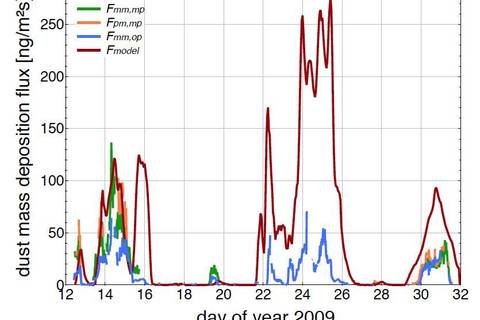Supported by the TENATSO (EU infra-structure) and the SOPRAN (BMBF research) projects, the CVAO was founded by an international cooperation of TROPOS, UK SOLAS (University of York), MPI BGC Jena, and the Instituto Nacional de Meteorologia e Geofisica (INMG, Cape Verde). Since January 2007, online physical characterization and offline chemical analysis of continental background and marine aerosols of the subtropical Atlantic Ocean is being performed. For the chemical analysis, continuous sampling on filter substrates is done. These measurements are done on the top of a 30 m-tower. Under the dominant north-eastern trade winds, air masses are transported to the CVAO with origins from Northwest Africa, Europe, North America and the northern Atlantic. The major goal of these investigations is the long-term determination of the near-surface aerosol particle seasonal and inter-annual variations. Focal points of investigations are on the aerosol processing such as the exchange of chloride and bromide by nitric and sulfuric acid in sea salt particles and on the chemical modification of Saharan dust during transportation. The scientific program consist of the collection of PM1 and PM10 filter samples, measurements of the aerosol number/size distribution between 0.02 and 10 µm particles, the light absorption of the particles, and the meteorological parameters. During intensive campaigns additional methods are applied, e.g. size-selective aerosol sampling using an Impactor and the determination of aerosol hygroscopic behavior as well as the determination of the speciation of soluble trace metals, in particular, transition metals due to their influence on the biological processes in the ocean whereby their bioavailability play important roles in the oceans biomass production (natural-mineral-dust-sources). Organic trace compounds from the ocean (surface micro-layer) in PM1 samples are also analyzed in order to investigate the processes governing the exchange of trace compounds between the ocean and the atmosphere (marine-aerosols). Another key aspect of the research is the determination of Saharan dust concentration and its deposition into the ocean. Dust concentrations are determined using independent methods and the obtained results are compared. These methods include the chemical analysis of the filter samples, the investigation of the spectral absorption coefficient of the dust particles, and the determination of the percentage of the dust particles in the aerosol by means of their hygroscopic properties. Micrometeorological data measured by ultrasonic anemometer and the application of a micrometeorological model allows for the determination of the dust mass deposition fluxes. Furthermore, the regional aerosol-transport model COSMO MUSCAT is applied to obtain the dust size-resolved mass concentrations and deposition fluxes and the obtained results are compared with ground-based measurements (transport-of-saharan-dust).The model simulations also deliver a spatiotemporal relation to the ground-based measurements and provide information of the likely dust source regions and the dust transport path over the tropical Atlantic Ocean.



